
Massif, our cylindrical screw-type implant is recommended for D1, D2 and D3 bone types. Advanced design and geometry based on platform switching ensures that this implant type is highly stable, enables accurate and firm insertion, and allows for biological space.
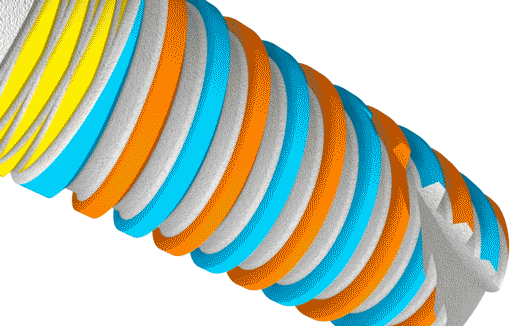
Micro Rings
The Micro-Rings increase the envelop surface as well as Bone-Implant-Contact (BIC), improving the implant’s primary stability and interfacial shear strength.
Double Thread
The Double Progressive Macro-Thread of the implant allows easier and quicker implant placement. It minimizes trauma to the bone while maintaining the excellent gripping effect.
Cutting Edges
There are two helix cutting blades that extend to the mid-section of the implant. The self-tapping function of the implant allows smooth penetration with minimal bone destruction.
The smooth rounded design of the implant apex reduces the risk of bone perforation.
Body Design
The cylindrical geometry of the implant body allows smooth implant placement and penetration under various bone density. It provides rigid fixation while not applying excessive stress on the bone. Furthermore, compared to tapered implants, cylindrical type implants have greater surface area, increasing the Bone-Implant-Contact (BIC) for better osseointegration.
Reverse Buttress
The Reverse Buttress [Macro Thread] is optimal for the distribution of the marginal forces. The transmittance of both axial and radial force allows increased bone formation as well as higher Bone-Implant-Contact (BIC).
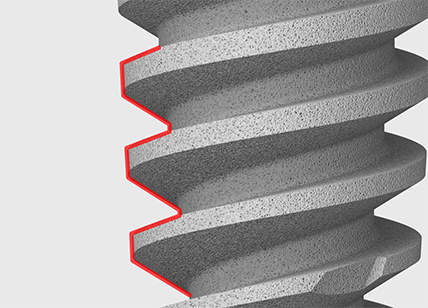
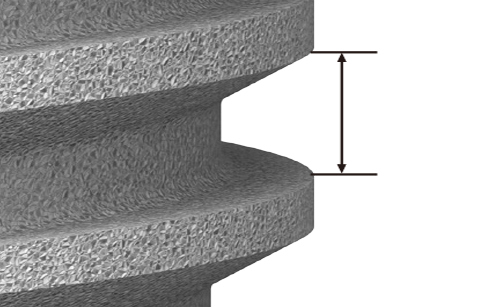
Thread Pitch
The Massif Implant’s thread pitch is 1.6mm. This thread pitch decreases the aggressiveness of the implant and increases the surface envelop for earlier osseointegration. It also reduces the effective stress.
Bone Condensing
The gradual widening of the thread thickness compresses the bone to yield enhanced implant fixation and higher stability even in compromised bone conditions. It also functions like a narrow ridge expander.
Platform Switching
The reduced diameter of the abutment relative to the implant reduces the risk of inflammatory cell infiltration. It greatly contributes to marginal bone preservation and soft tissue attachment.
One Connection
All of the Massif implants, regardless of diameter (3.75mm to 6.0mm), share the same internal hex connection. The connection is compatible with the Axis implants as well.
Reverse Crown
The concaved design of the abutments allows the tissue to heal in the shape that mimics the contour of the natural emergence profile. Also, this design maximizes the space for tissue volume maintenance.
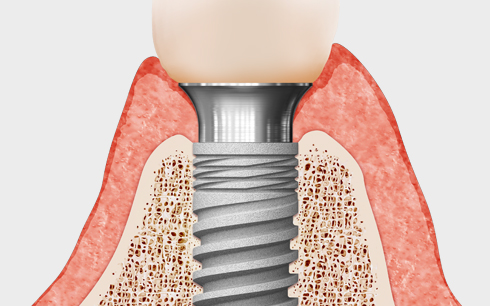
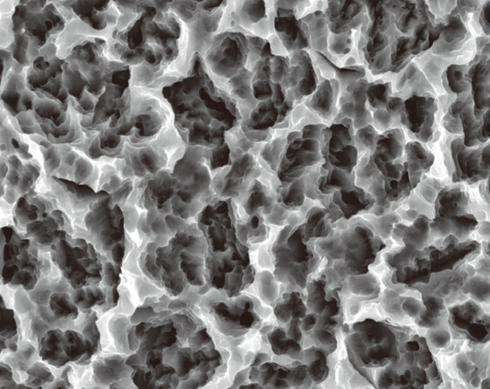
Surface Treatment
The implant surface is achieved by sandblasting technology (Aluminum oxide particles) followed by acid etching. This surface treatment method is the most researched technology in the dental implant market. The average Ra value, a standard parameter to describe average surface roughness, is 2.0 μm.
Furthermore, Massif implant surface is modified to be an osteoconductive and hydrophilic surface. This promotes active ion interaction with blood plasma, resulting in better Bone-Implant-Contact (BIC) distribution and optimal cellular adhesion for faster osseointegration.


